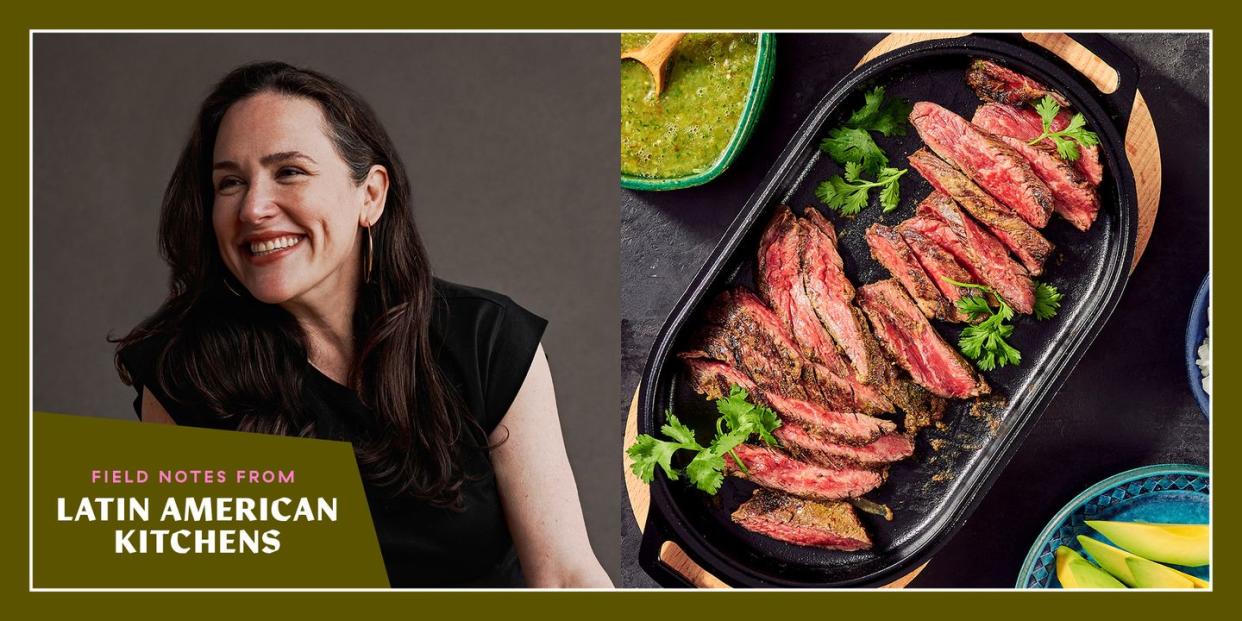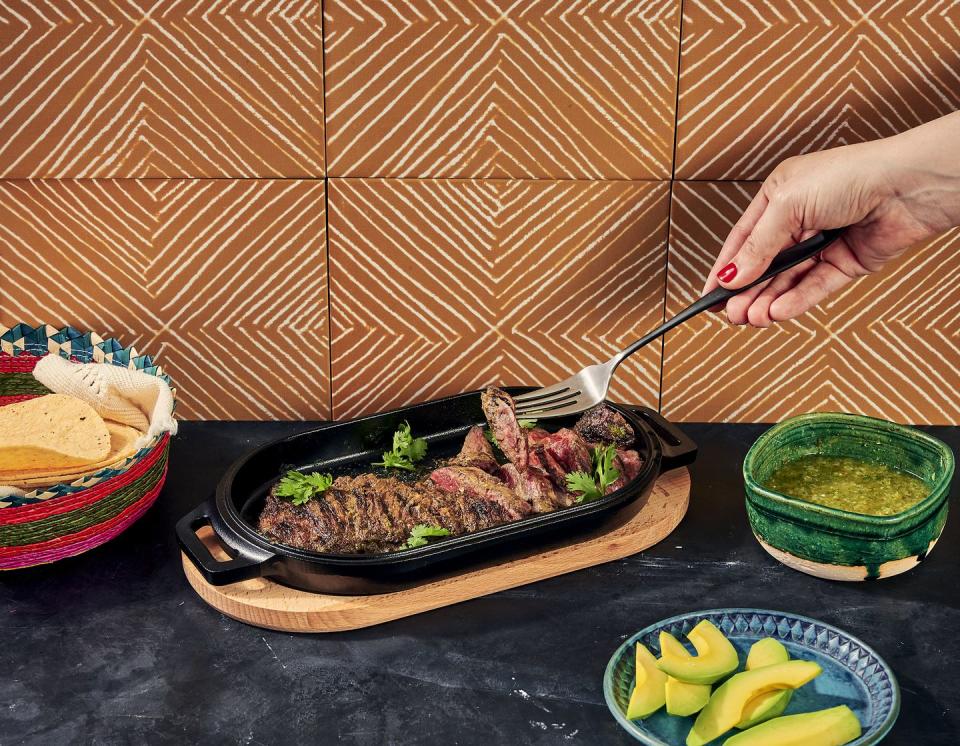Here's The Secret For Perfect Carne Asada

In my family, Sundays were for cookouts and grilled carne asada. Growing up in Atlanta, we’d take a trip to the carniceria, or butcher, and roll up on a display case showcasing marinated pork al pastor, chicken marinated in citrus, achiote, and spices, and enormous slabs of chicharrones. My father would start speaking Spanish so rapidly that I couldn't understand. My mom and us kids would grab ingredients like corn tortillas, cilantro, and white onions (never yellow, because the sweetness doesn’t cut the fat of the meat the same way); and chilies (always serrano because they’re more flavorful than jalapeños) for fresh salsas.

My parents were born and raised in Mexico City, so I make carne asada my dad’s way. He had a broad repertoire of marinades, sometimes a homemade mixture, but often a bottle of Cuban mojo criollo. After a quick marinade, the meat would go on his Weber charcoal grill at the highest heat until the skirt steak's thin edges crisped with bits of char. After the meat had rested, my father would use his cleaver to loudly chop the meat into tiny little pieces on a thick wooden cutting board like a taquero at a taco stand. We’d wrap the tender beef in tortillas and eat it standing over the same cutting board—or sometimes the sink to catch the dripping juices—because tacos and tortillas should be eaten when hot. The contrast of the lime, sharp white onion, grassy cilantro, and spicy salsa de arbol is a memory that is so vivid and unforgettable that I crave it every Sunday.

Spice and fire were central to those Sunday dinners, whether carne asada on our Weber or a steak on a Tuscan grill in our fireplace. Fire plays a vital role in Mexican cooking—used as much in cooking food as creating the clay vessels we use to cook our beans and moles. But since fire emerged as a cooking method nearly a million years ago, it's been incorporated into recipes from every culture on earth. No matter what cuisine you are discussing, there is a dish where meat is cooked over fire. And in Latin America, it’s carne asada.
It’s typically beef—and sometimes chicken, pork, or goat—with the root word asar in Spanish meaning to roast or grill in an oven or over an open fire. And so carne asada is more about the method than the recipe. The meat is usually inexpensive cuts, such as flank steak or skirt steak, which is marinated in a mixture of spices and herbs. Cumin, chili powder, and garlic are common, and combined with citrus juice or vinegar, the marinade tenderizes the meat and adds flavor.
Yet, beef wasn't always as prevalent as it is today. Spanish colonists brought European cattle to Mexico in 1521, which launched the country's still expansive cattle industry, particularly in the Northern parts of Mexico. Grilling, roasting, and smoking meats have always been part of Mexico's culinary traditions, so beef naturally became part of that. As a result, the dish carne asada originated in Mexico before spreading globally. As people migrated across the Americas, carne asada entered other cultures, countries, and cuisines.
In Nicaragua, they use garlic and orange juice. In Colombia, they use cumin and beer; in many parts of Latin America, like Venezuela, they even use soy sauce. But seasonings vary region by region, and every household has its secret sauce. In Mexico City, where my family is from, every cook has their version of carne asada; flavors differ from door to door in the same apartment building. The accompaniments and sides are unique to each community and home—papas salada and avocado in Colombia or chimichurri and crusty bread in Argentina. In addition to tortillas, some Mexican families may even use bread as a torta. There's no wrong way to eat it.

One of the things I love about carne asada is how universally beloved it is. It will make my kid, me, and my grandmother just as happy as someone with no personal connection to Latin America. Since it always feels celebratory, it can transform a bleak evening into a taco night. Making it will easily cheer up my husband, whose family hails from the North of Mexico and uses flour tortillas instead of my preferred corn. Yes, we are a house divided by tortillas.
Many Latin American households come together around a grill (in Mexico, “having a carne asada" is even slang for a social gathering). It always feels special, a symbol of togetherness. For my parents, making carne asada was just as much about the ritual of going to the meat counter as eating the piping tender beef right off the grill. It connected them to a part of their past and culture. It was something they passed on that no matter how far away I get from my family, making carne asada always makes me feel connected to my roots.

You Might Also Like

